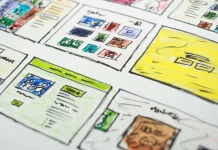If the words “cold email” are enough to send a shiver down your spine, you’re not alone.
As a writing coach, I’ve had dozens of new freelancers tell me they’d rather have a root canal than email a stranger about their writing services.
And the fear is understandable.
Everyone fears rejection – even after 5+ years of freelancing, I still get anxious pitching to new clients.
But cold emailing shouldn’t feel like you’re in a horror movie and the lights just went out.
So allow me to soothe your panic.
In this post, I’ll teach you the ins and outs of effective cold emailing, step-by-step, with plenty of examples.
I’ll even show you a simple cold email that landed me thousands of dollars of freelance work from one client.
Let’s get started, shall we?
What is Cold Emailing?
Cold emailing is when you send an email to a person you don’t know, usually to pitch a service or sell a product.
Cold emailing can also be called “cold outreach”.
Personally, I’ve used cold emails to get new freelance writing clients, but there are other reasons to cold email:
- You’ve created a new product and want some beta testers
- You’re offering a new consulting service
- You want to build a relationship with someone in your industry
- You’re trying to reach someone higher up in the company, and you’re looking for an introduction
Cold emailing is different from “warm emailing”, which is sending an email to someone you already know.
Both emailing techniques are great ways to network and build connections, but today, we’re covering cold emailing.
Are your hands getting clammy yet?
Don’t worry, I’m about to fix that with a little training…
How to Write a Killer Cold Email in 6 Simple Steps
So how do you approach writing a cold email? Do you use an email template? Write every email from scratch?
It’s actually a blend of both.
Let’s walk through the process, step-by-step.
Step 1: Identify Your Goals for Cold Emailing
What’s the reason behind your cold email campaign?
The best way to figure this out is to answer this question: What action do you hope the reader will take after reading your email?
Do you want them to book a discovery call?
Answer a quick question?
Sign up for a free trial?
This answer will shape the content of your cold email.
Step 2: Create a Prospect Spreadsheet
Cold email outreach is usually done in batches.
Sometimes BIG batches – like dozens of emails in one week.
So you need a place to keep track of all your correspondence.
Open up a new Google Sheet or Excel document, and start collecting contact information for the people you want to email.
Create columns for prospect name, email address, and website link. Then add columns to record the dates of first emails and for follow up emails.
Also create a column for “Notes”.
Once you’ve collected enough contacts, you’re ready to rock and roll.
Note: There’s no hard number to shoot for, but the more contacts you collect, the better your chances of getting a response.
Step 3: Craft Your “Elevator Pitch”
Your elevator pitch is a one to two-sentence description of your offer, and it may include a short bulleted list.
Here’s an elevator pitch I’ve used before:
I help life coaches like you save time, build authority and book more clients by creating content that converts. I currently offer:
- SEO-focused content strategy
- SEO-optimized blog posts
- SEO keyword research
- Email marketing
- Nonfiction book ghostwriting/editing
- Nonfiction book coaching
Here’s an easy template you can use for your elevator pitch:
I help [target client/customer] [achieve goal] by [your product or service].
Or:
I help [target client/customer] [avoid pain point] and [achieve goal] by [your product or service].
You might have a couple of different elevator pitches for different types of potential customers, so you should save all of them in a document, so they’re ready to copy/paste into your personalized cold email.
Note: If you’re writing a cold email simply to build a relationship with your contact, you won’t use an elevator pitch (More on this later).
Step 4: Write Personalized Emails
What’s the difference between an email that gets a response and one that never gets opened?
Personalization.
In a study of 20 million cold emails by Woodpecker, they found that personalized emails had a 17% open rate compared to a 7% open rate for “basic” cold emails (that only personalized the recipient’s name).
Now, do you need to mention their favorite underwear brand or the name of their first born child?
No. (Please don’t!)
But you do need to write a personalized greeting as an introduction to each email.
I’ll give you some examples in a moment, when we break down all of the email components below.
But first, let’s finish the steps.
Step 5: Send Follow-Up Emails
Many of your emails are going to sit in the recipient’s inboxes gathering dust.
It’s not you, it’s just part of the cold-emailing game.
And while it’s possible they are ignoring you, they also might just be really busy or their inbox is cluttered.
You can increase your chances of getting a response by sending a quick follow-up email.
It can be something as easy as:
Hi [Contact Name]! I know you’re probably really busy so I just wanted to make sure you saw my last email. Looking forward to chatting with you soon!
It’s just a little nudge to get your original email back to the top of their email inbox.
I recommend sending a follow up email 3-7 days after your original one.
Step 6: Keep Track of Your Work
Make sure you document every email you send, every follow-up, and every response you receive.
The last thing you want to do is irritate a potential client by sending them the same email multiple times.
Use your “notes” section to write about the responses you get, even if it’s a rejection. Feedback (negative or positive) will help you improve your cold email strategy.
Related reading: How to Write an Email: 15 Tips That Get Results (+ Examples)
The 4 Components of a Cold Email (& How to Nail Them)
Now that we’ve covered the steps in the cold emailing process, let’s break down the different parts of your cold email, and how to knock each one out of the park.
1. The Subject Line
Your subject line is one of the first things your potential client sees in their inbox, and it’s usually a deciding factor on whether or not they open your email.
So, no pressure, right?
You don’t need to spend hours coming up with the perfect subject line, but you should put some thought into it.
Make sure your email subject lines are:
- Short – 60 characters or less, so recipients will see the whole thing
- Interesting – try to provoke curiosity
- Relevant – make sure your subject line is an honest reflection of what’s in your email
Let’s say you’re offering to solve a client’s problem by offering a product or service.
You could use any of these options:
Need help with [client pain point/problem]? I can help.
Example: Need help increasing your site’s traffic? I can help.
Tired of [client pain point]? Let me help you.
Example: Tired of dates that lead nowhere? Let me help you.
[Pain point] There’s a better way!
Example: Paid ads not converting? There’s a better (cheaper) way!
Or, if you’re trying to build a relationship with someone, you could write something like:
You’d love this [blog/article/video] about [topic relevant to them]
Example: You’d love this video about helicopter parenting
You could also ask them a question about a piece of content they recently posted:
Quick question about your [topic] [article, video, blog post]
Example: Quick question about your intuitive eating video
If you have a mutual contact, you can mention that in the subject line:
[Name of contact] recommended we connect
There are tons of subject line ideas online, and you can also feed your email into ChatGPT and ask it to brainstorm subject lines for you. Use this prompt:
I’m sending this cold email to [name of contact] from [company].
My goal is to get him/her to [desired action].
Here’s the email body:
[insert email body here]Please generate 10 possible subject lines for this email. Make them under 60 characters, make them relevant to the email, and make them curiosity provoking.
2. Personalized Greeting
This is the introduction to your email – usually the first 2-3 sentences.
First, make sure you’re addressing the email to an actual name (not a company name).
So: Dear [name],
Or: Hi [name],
What you say next will depend on your goal for the email.
Personalized greetings can look like:
- A genuine compliment on their product, service, or a recent piece of content – I really resonated with your blog post about using customer testimonials in your marketing.
- Empathizing with a pain point – As a former consultant, I understand how hard it is to get leads.
- Name dropping your mutual contact – Nancy Smith told me to reach out and connect with you.
- Providing them with a resource – I’ve been reading your blog for over a year, and when I saw this video, I immediately thought of you.
Starting your email with a personalized greeting accomplishes two goals:
1 – It shows them you’re a human, and not a bot.
2 – It shows them you care – that you didn’t just use a template and send out a mass email.
3. Your Pitch (or Ask)
Once you’ve greeted your prospect, it’s time to transition to your elevator pitch or other “ask”.
Here, it’s best to get straight to the point.
This could be where you copy/paste in your elevator pitch (see Step 3 above).
Or, if you’re making a different type of ask:
- I would really appreciate it if you could introduce me to [contact name], I think I could really help him with [pain point].
- I’d love your opinion on [specific topic or tool] when you get a chance.
- I have a quick question for you: [your question]
Your ask or pitch should be succinct – no need to elaborate or give a ton of detail. If the prospect is interested in engaging with you, you can give them more details later on, or in a discovery call.
4. Call to Action (CTA)
What action do you want the prospect to take immediately after reading your email?
At the end of your email, give them a friendly nudge to do it.
This is called a “call to action” (CTA) in copywriting, and all of your emails should include one.
CTAs could look like:
- If you’re not too busy, hit “reply” and tell me your thoughts, I’d love to hear from you!
- If you’re interested in my [service or product], just reply to this email and we can schedule a discovery call.
- If you’d like to talk about how we can work together, here’s the link to my scheduler – feel free to book a 30-minute call with me.
- If you’d like to give a try, click this link for a free trial.
Related reading: 10+ Email Etiquette Rules Every Pro Should Know in 2024
The Cold Email That Landed Me Thousands of Dollars of Freelance Work
To tie it all together, here’s a cold email that I sent to the CEO of a content marketing agency that followed these principles.
I was still fairly new at freelancing at this time, so I was terrified to send this email.
Especially since the CEO ran one of the biggest writing-related Facebook groups in existence, and was well-known in the industry.
But the results were beyond my expectations.
Here’s what I wrote:
Subject Line: Need an experienced freelance writer? I can help.
Hi Karen!
My name is Ivy, and I’m a freelance writer and editor with a background in SEO strategy.
I’ve been a member of your Facebook group for about 6 months now, and I want to thank you for creating and managing such a helpful group! I posted a freelancing question last week and your members’ answers and support were extremely helpful.
I’ve been following your agency for a while now, and all of your content is top-notch. I admire your team’s integrity and true desire to provide value–to your marketing clients as well as the writers in your Facebook group.
If you need freelance writers, I’d love to be a part of your team.
I offer:
- SEO-focused content strategy
- SEO-optimized blog posts
- SEO keyword research
- Content editing
- Web copywriting
- Email marketing
If you’re interested in working with me, feel free to reply to this email and we can hop on a call.
Thanks again for the support and great content!
Ivy Shelden
Related reading: 12 Best Sites for Email Templates (Both Free & Responsive)
The Results
Her assistant immediately replied and asked to book a call with me and the CEO.
She ended up hiring me as a freelance editor and SEO strategist (I didn’t even have to start as a writer!), earning me thousands of dollars of income over several months.
Still Scared to Send Cold Emails? Try This Simple Mindset Shift
You’ve learned everything you need to know about cold emailing.
But you still feel a little freaked out.
You’re thinking: What if I’m bothering them? What if they snap at me and tell me I’m the most annoying person on earth?
I get it, and I’ve had those same thoughts.
Here’s the mindset switch that worked for me: Your email isn’t about getting something from the person. It’s about helping that person solve a problem.
That’s why you don’t see a lengthy biography or list of qualifications in any of these examples.
That’s because the email isn’t about you, it’s about them.
Your intention is to give something, not get something.
While you eventually want to get paid for your services (because they’re valuable, right?), you’re most likely going to offer your cold email recipient a good deal.
Whether it’s a free consultation call or a free resource, you’re letting them know about something that can help them. And you’re making it easier for them to solve their problem by reaching out to them directly.
So if you fear being rejected, remember, it’s not about you! It’s about helping others.
Go Forth & Cold Email With Confidence!
Now you know how to write your first cold email campaign, step-by-step.
We’ve dissected an effective cold email and gone over some strong examples of subject lines, personalized greetings, pitches and CTAs.
And now you’re ready to put it all together.
Best of all, you’re no longer terrified of the cold emailing process because you realize you’re helping people instead of bugging them. ‘
All you have to do now is put your new skills and mindset to use.
So start your spreadsheet and start collecting names.
One of them might be your biggest client yet!
Create your very own Auto Publish News/Blog Site and Earn Passive Income in Just 4 Easy Steps







